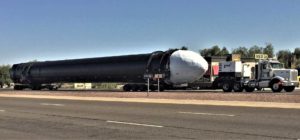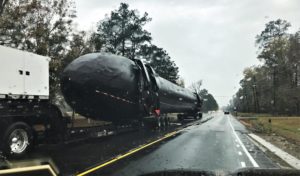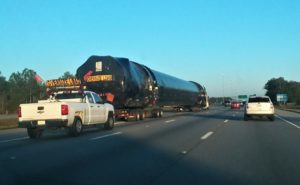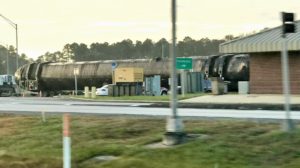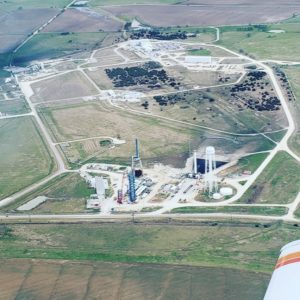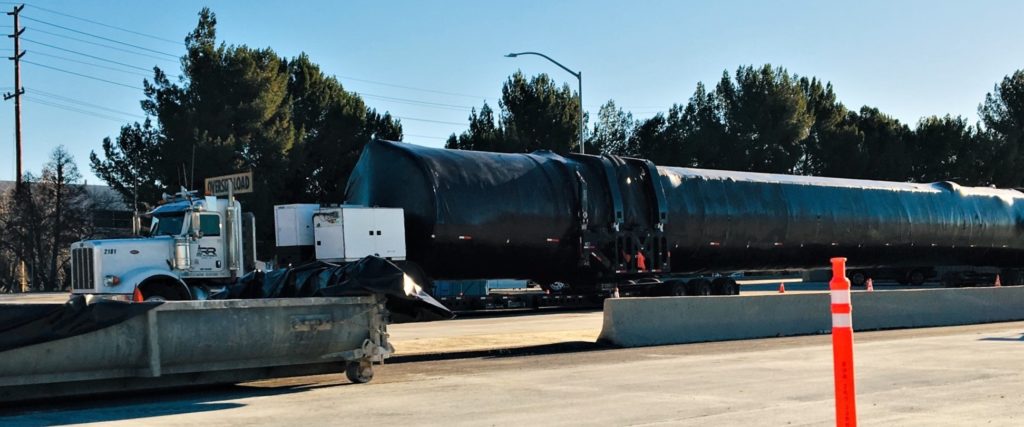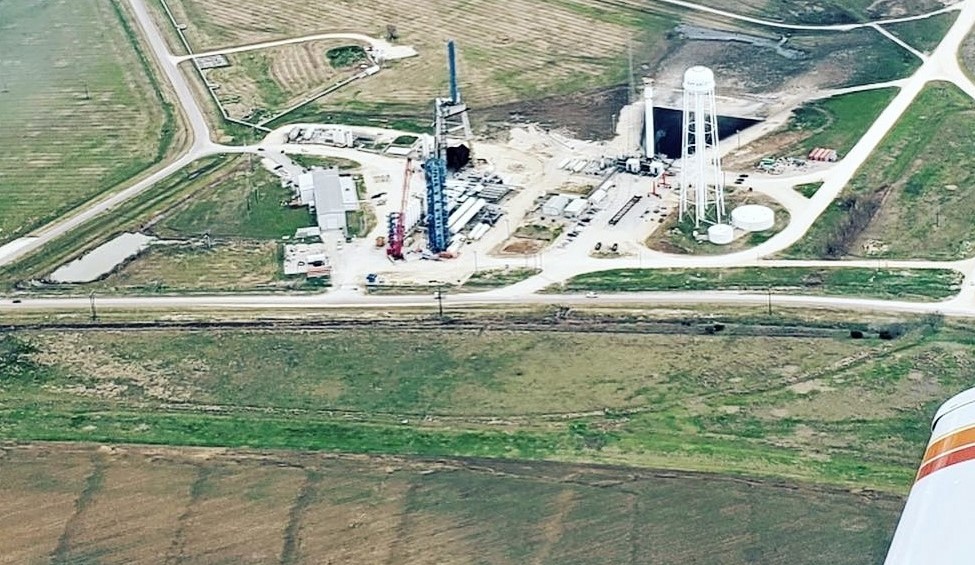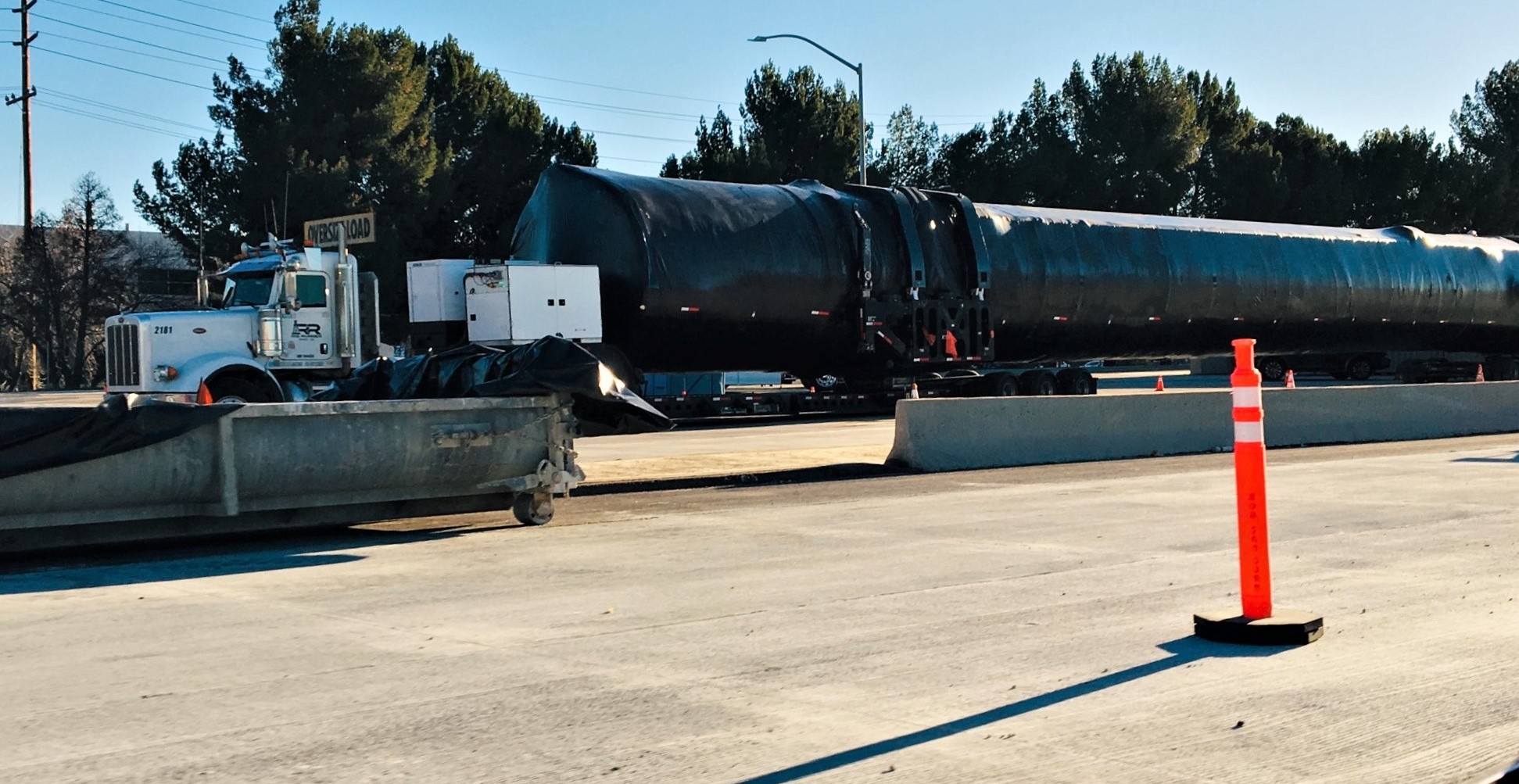
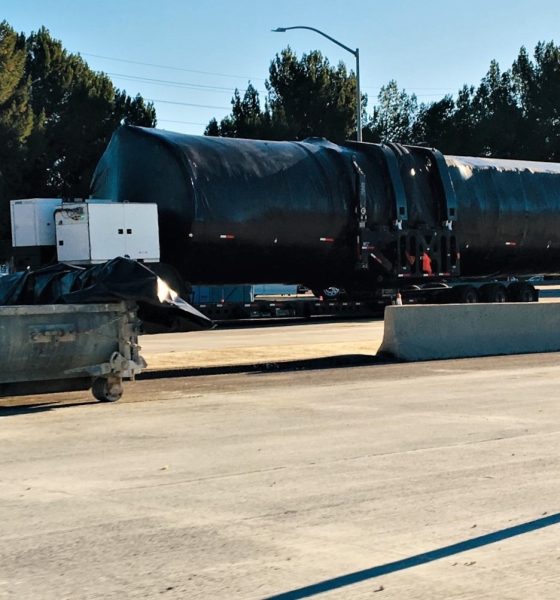
News
SpaceX Falcon 9 booster spied on highway as triple-satellite launch moves right
A SpaceX Falcon 9 booster was spotted heading north from the company’s Hawthorne, California factory on January 22nd, signifying a likely shipment of the flight-proven rocket that will help launch Canada’s trio of Radarsat Constellation Mission satellites.
Delayed from mid-February to early March 2019 after an unplanned landing anomaly damaged the Falcon 9 originally assigned to the mission, the shipment of a different booster to Vandenberg Air Force Base (VAFB) helps to narrow down the rocket now likeliest to launch the Canadian Space Agency’s (CSA) radar satellite constellation.
https://twitter.com/GoForStaging/status/1088174203298230272
Do the Booster Shuffle!
Thanks to a hydraulic pump failure that led Falcon 9 B1050 to land (albeit softly and in one piece) in the Atlantic Ocean last December, the imminent launch of two booster-dense Falcon Heavy missions, and the thus far schedule-shy orbital launch debut of Crew Dragon, SpaceX’s fleet of available boosters – all flight-proven – can be succinctly summarized as “B1046 thru B1049”.
B1050’s future is uncertain after suffering a smashed interstage and soaking in salt water for several days, while B1051 is definitively assigned to Crew Dragon’s orbital launch debut, known as Demo-1 (DM-1). Falcon 9 B1052 and B1053 are unknown quantities and B1054 was expended after a high-value US Air Force launch, also SpaceX’s final mission of 2018. It’s probably safe to bet that B1052, B1053, and B1055 will be the next three boosters to support a Falcon Heavy launch (or two), currently NET March and April 2019. All three of those Falcon Heavy (FH) boosters have completed static fire tests in Texas and both side boosters arrived at SpaceX’s Florida facilities within the last ~6 weeks.
- A Falcon Heavy side booster was spotted eastbound in Arizona on November 10th. (Reddit – beast-sam)
- The second (and third) flight of Falcon Heavy is even closer to reality as the first new side booster heads to Florida after finishing static fire tests in Texas. (Reddit /u/e32revelry)
- Reddit user wedatsaints captured this photo of the second Falcon Heavy side booster traveling through Mississippi on Jan 16. (Reddit /u/wedatsaints)
- SpaceX Facebook group member Joshua Murrah captured the second Falcon Heavy side booster to arrive in Florida in the last month. (Joshua Murrah, 01/17/19)
- A booster – likely the next Falcon Heavy center core – was vertical at McGregor’s S1 static fire stand. (Instagram /u/tcryguy)
Assuming that Falcon Heavy Flight 2 and 3 use the same exact boosters, SpaceX production technicians and engineers may already be nearing the completion of another Falcon 9 booster (B1056, presumably) at the Hawthorne factory, although they are likely 1-2 weeks away from that milestone. If, Falcon Heavy Flight 3 (presumed to be the USAF’s STP-2 mission) does not reuse all three first stage boosters from Flight 2 (commercial payload Arabsat 6A), then Hawthorne will have to build, ship, and test anywhere from 1-3 additional boosters between now and April 2019. In the latter scenario, all unflown – mid-build or completed – Falcon boosters would be ‘claimed’ between now and March or April.
Put in another way, short of opting for a delay that could stretch 1-4 months or longer, the Canadian Space Agency (CSA) and Radarsat prime contractor MDA will have to accept one of SpaceX’s flight-proven Falcon 9s.
Falcons on wheels
Thanks to SpaceX’s trusty and well-worn method of using good old trucks and roads to transport Falcon 9 and Heavy boosters, upper stages, fairings, landing legs, and much more cross-country, spaceflight fans have long taken advantage of opportunities – rare and fleeting as they might be – to spot and track SpaceX hardware on public roads. Put simply, a lot of people are excited about SpaceX or are at least familiar and curious enough to know someone to share a photo or observation with. As a result, the community averages dozens of ‘core spottings’ per year. With a little intuition, the process of elimination, a few sources, and some wild guesses, this allows unofficial fans to (very roughly) paint a picture of SpaceX’s fleet of rockets.
- Reddit user intamin1 spotted a Falcon 9 booster northbound between Hawthorne and Vandenberg on Jan 22. (Reddit /u/intamin1)
- A booster – likely the next Falcon Heavy center core – was vertical at McGregor’s S1 static fire stand. (Instagram /u/tcryguy)
For example, the Falcon 9 spotted in Valencia, CA on January 22nd by Reddit user intamin1 could theoretically be any SpaceX booster currently in existence. By knowing the rough state of SpaceX’s fleet (as described above) and observing that the booster was northbound between Hawthorne, CA (the factory) and Vandenberg Air Force Base (VAFB) on Jan 22, a great deal can be intuited. Bound for SpaceX’s West Coast launch complex (SLC-4), it ought to be flightworthy. Knowing that a Falcon Heavy center booster was on SpaceX’s McGregor, Texas static fire stand on January 10th means that the spotted booster can’t (or at least shouldn’t) be coming from Texas, as Falcon Heavy has no known launches planned from VAFB. The process of testing, inspecting, and preparing Falcon boosters for cross-country shipment is also not easily rushed.
On the East Coast, SpaceX needs to launch communications satellite PSN-6 and Spaceflight rideshare GTO-1 in mid to late February. With no new boosters expected to be easily available for months and PSN-6/GTO-1 already entering into the phases of payload fueling, integration, and fairing encapsulation, it can be all but guaranteed that a flight-proven booster was assigned to the mission months ago and is now nearly ready for its third flight somewhere in Cape Canaveral, FL.

Given that B1046 and B1049 are on the West Coast after conducting launches from VAFB and that B1050 is out of circulation for the time being, only B1047 and B1048 remain (in theory) on the East Coast, both having flown two missions. B1048 was recently spotted and confirmed in photos of SpaceX’s Pad 39A integration hangar, although Falcon 9 B1051 and the first orbit-ready Crew Dragon were the center of attention.
B1047 completed its second launch in mid-November 2018 and returned to one of SpaceX’s Florida hangars for refurbishment around Nov 21. Unless any number of locals and bystanders somehow missed it, neither booster has left the Cape since arriving. Meanwhile, B1048 is currently the best-known candidate at hand for SpaceX’s Crew Dragon In-Flight Abort (IFA) test, expected to occur no earlier than spring 2019 and entirely dependent upon the successful launch, reentry, recovery, and refurbishment of the DM-1 capsule to proceed. As a result, the only booster that is realistically available for PSN-6/GTO-1 is Falcon 9 B1047 for what would be its third launch.
Few of my favorites from today's Pence visit to #SpaceX pad 39A. In first photo, from left to right: Previously flown B1048, booster for DM-1, Crew Dragon for DM-1. Look at the size of that Merlin engine bell.
More photos: https://t.co/6dMbampx2c pic.twitter.com/3KmjVj4Rvf
— Emre Kelly (@EmreKelly) December 18, 2018
Assuming B1048 did not manage to make it from Cape Canaveral to Central California without a single spotting, the only rockets available for the RCM mission are B1046 and B1049. B1049 completed its second launch – Iridium-8 – just weeks ago and returned by drone ship to Port of LA on January 13th, whereas Falcon 9 B1046 – after completing its historic third launch – completed recovery and was snug in a Hawthorne, CA refurbishment bay by December 17th, 2018. Going off of Occam’s Razor, B1046 is the clear victor for the launch of RCM, although a ~60-90-day turnaround for the already thrice-flown booster could be a stretch. B1049, however, would have barely a single month for refurbishment and inspections.
In the last week or two, RCM stakeholders were provided an updated launch target, delaying the mission by approximately two weeks to a window that begins February 28th with the implication being that the launch is now expected NET early March. If that date is recent and from SpaceX, B1046 is the most practical option, with B1049 thus filling its refurbishment bay in Hawthorne, CA around the same day. If a risk of a 30-day or greater delay is tolerable for CSA and MDA, then B1049.3 would likely be a more optimal fit for their risk tolerance profile. Time will tell!

News
Tesla earns top honors at MotorTrend’s SDV Innovator Awards
MotorTrend’s SDV Awards were presented during CES 2026 in Las Vegas.

Tesla emerged as one of the most recognized automakers at MotorTrend’s 2026 Software-Defined Vehicle (SDV) Innovator Awards.
As could be seen in a press release from the publication, two key Tesla employees were honored for their work on AI, autonomy, and vehicle software. MotorTrend’s SDV Awards were presented during CES 2026 in Las Vegas.
Tesla leaders and engineers recognized
The fourth annual SDV Innovator Awards celebrate pioneers and experts who are pushing the automotive industry deeper into software-driven development. Among the most notable honorees for this year was Ashok Elluswamy, Tesla’s Vice President of AI Software, who received a Pioneer Award for his role in advancing artificial intelligence and autonomy across the company’s vehicle lineup.
Tesla also secured recognition in the Expert category, with Lawson Fulton, a staff Autopilot machine learning engineer, honored for his contributions to Tesla’s driver-assistance and autonomous systems.
Tesla’s software-first strategy
While automakers like General Motors, Ford, and Rivian also received recognition, Tesla’s multiple awards stood out given the company’s outsized role in popularizing software-defined vehicles over the past decade. From frequent OTA updates to its data-driven approach to autonomy, Tesla has consistently treated vehicles as evolving software platforms rather than static products.
This has made Tesla’s vehicles very unique in their respective sectors, as they are arguably the only cars that objectively get better over time. This is especially true for vehicles that are loaded with the company’s Full Self-Driving system, which are getting progressively more intelligent and autonomous over time. The majority of Tesla’s updates to its vehicles are free as well, which is very much appreciated by customers worldwide.
Elon Musk
Judge clears path for Elon Musk’s OpenAI lawsuit to go before a jury
The decision maintains Musk’s claims that OpenAI’s shift toward a for-profit structure violated early assurances made to him as a co-founder.

A U.S. judge has ruled that Elon Musk’s lawsuit accusing OpenAI of abandoning its founding nonprofit mission can proceed to a jury trial.
The decision maintains Musk’s claims that OpenAI’s shift toward a for-profit structure violated early assurances made to him as a co-founder. These claims are directly opposed by OpenAI.
Judge says disputed facts warrant a trial
At a hearing in Oakland, U.S. District Judge Yvonne Gonzalez Rogers stated that there was “plenty of evidence” suggesting that OpenAI leaders had promised that the organization’s original nonprofit structure would be maintained. She ruled that those disputed facts should be evaluated by a jury at a trial in March rather than decided by the court at this stage, as noted in a Reuters report.
Musk helped co-found OpenAI in 2015 but left the organization in 2018. In his lawsuit, he argued that he contributed roughly $38 million, or about 60% of OpenAI’s early funding, based on assurances that the company would remain a nonprofit dedicated to the public benefit. He is seeking unspecified monetary damages tied to what he describes as “ill-gotten gains.”
OpenAI, however, has repeatedly rejected Musk’s allegations. The company has stated that Musk’s claims were baseless and part of a pattern of harassment.
Rivalries and Microsoft ties
The case unfolds against the backdrop of intensifying competition in generative artificial intelligence. Musk now runs xAI, whose Grok chatbot competes directly with OpenAI’s flagship ChatGPT. OpenAI has argued that Musk is a frustrated commercial rival who is simply attempting to slow down a market leader.
The lawsuit also names Microsoft as a defendant, citing its multibillion-dollar partnerships with OpenAI. Microsoft has urged the court to dismiss the claims against it, arguing there is no evidence it aided or abetted any alleged misconduct. Lawyers for OpenAI have also pushed for the case to be thrown out, claiming that Musk failed to show sufficient factual basis for claims such as fraud and breach of contract.
Judge Gonzalez Rogers, however, declined to end the case at this stage, noting that a jury would also need to consider whether Musk filed the lawsuit within the applicable statute of limitations. Still, the dispute between Elon Musk and OpenAI is now headed for a high-profile jury trial in the coming months.
News
Tesla Giga Shanghai celebrates 5 million electric drive unit milestone
The milestone was celebrated by the company in a post on its official Weibo account.
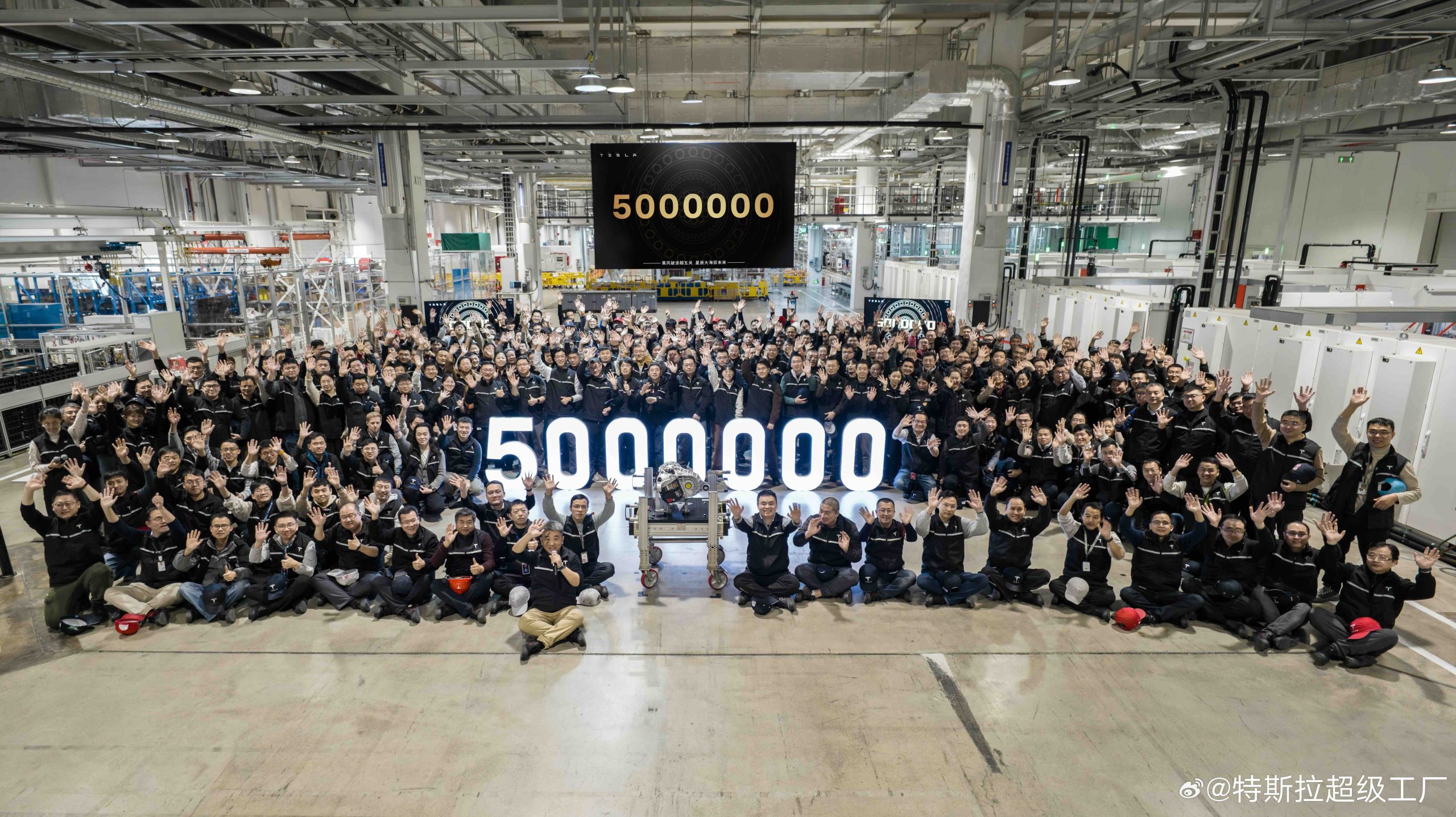
Tesla China has reached another manufacturing milestone at Gigafactory Shanghai, rolling out the facility’s 5 millionth locally produced drive unit.
The milestone was celebrated by the company in a post on its official Weibo account. In its post, the Giga Shanghai team could be seen posing with the 5 millionth drive unit.
Giga Shanghai’s major benchmark
The milestone drive unit was produced at Gigafactory Shanghai, which produces the Model Y and the Model 3. In a release, Tesla China noted that its three-in-one integrated electric drive system combines the motor, gearbox, and inverter into a single compact assembly. This forms a powerful “heart” for the company’s electric cars.
Tesla China also noted that its drive units’ integrated design improves energy conversion efficiency while reducing overall weight and complexity, benefits that translate into stronger performance, improved handling, and longer service life for its vehicles.
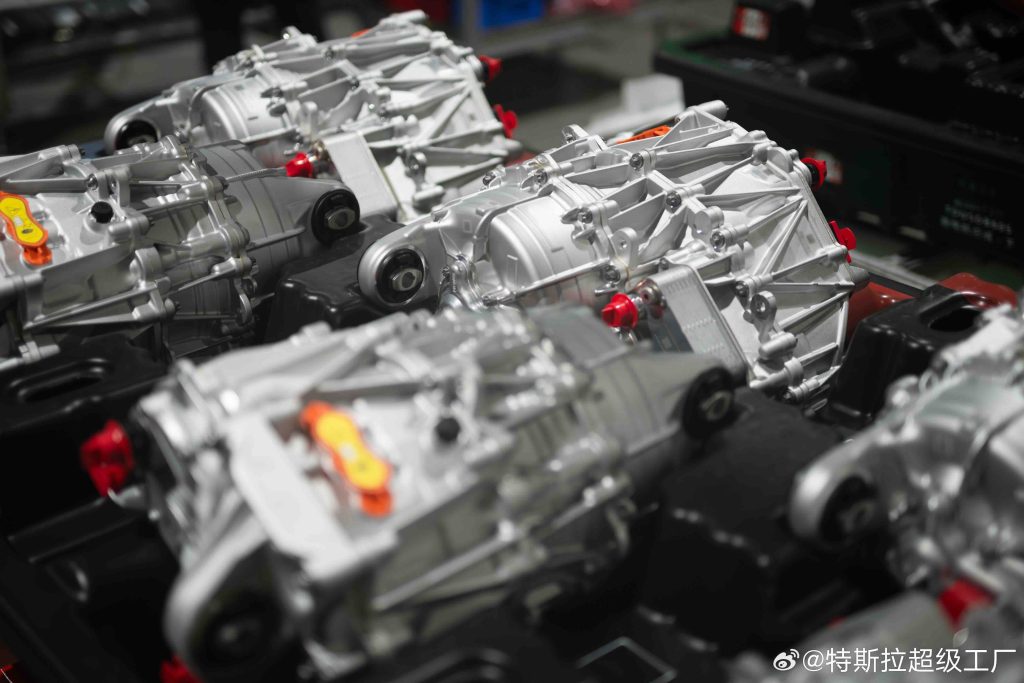
The new milestone builds on earlier achievements at the same site. In July 2024, Tesla announced that its 10 millionth electric drive system globally had rolled off the line at the Shanghai plant, making it the first self-produced Tesla component to reach that volume.
More recently, the factory also produced its 4 millionth China-made vehicle, a Model Y L. The factory has also continued hitting global production milestones, rolling out Tesla’s 9 millionth EV worldwide late last year, with the landmark vehicle being a Tesla Model Y.
Tesla China’s role
Construction of Giga Shanghai began in January 2019, with production starting by the end of that year. This made it the first wholly foreign-owned automotive manufacturing project in China. The facility began delivering Model 3 vehicles locally in early 2020 and added Model Y production in 2021. The plant is now capable of producing about 1 million vehicles annually.
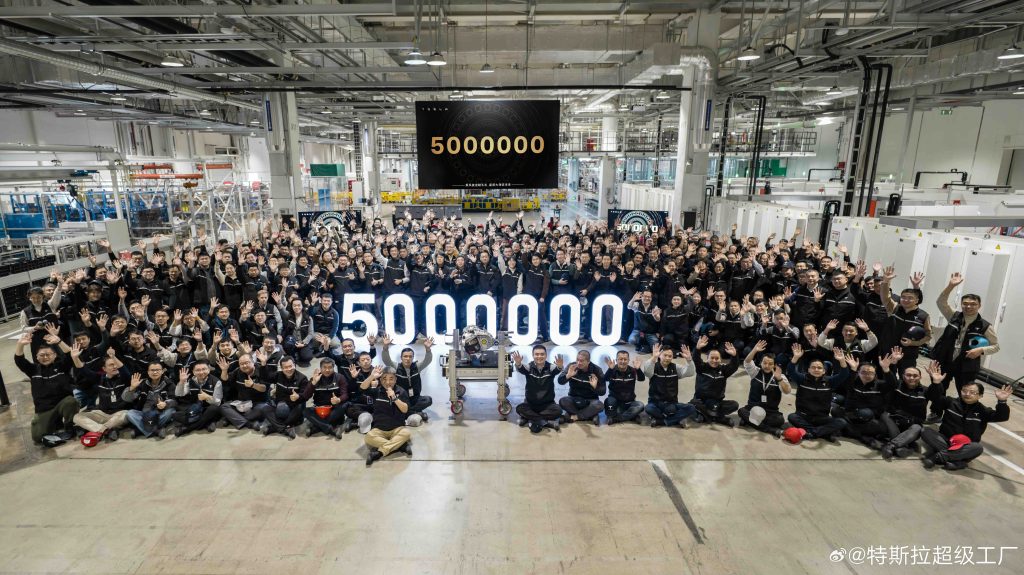
Throughout 2025, Giga Shanghai delivered 851,732 vehicles, representing a 7.08% year-on-year decline, according to data compiled by CNEVPost. Even so, recent months showed renewed momentum.
In December alone, Tesla China recorded wholesale sales of 97,171 vehicles, including domestic deliveries and exports, making it the company’s second-best monthly total on record, per data from the China Passenger Car Association. Retail sales during December reached roughly 94,000 units, up about 13% year over year.
